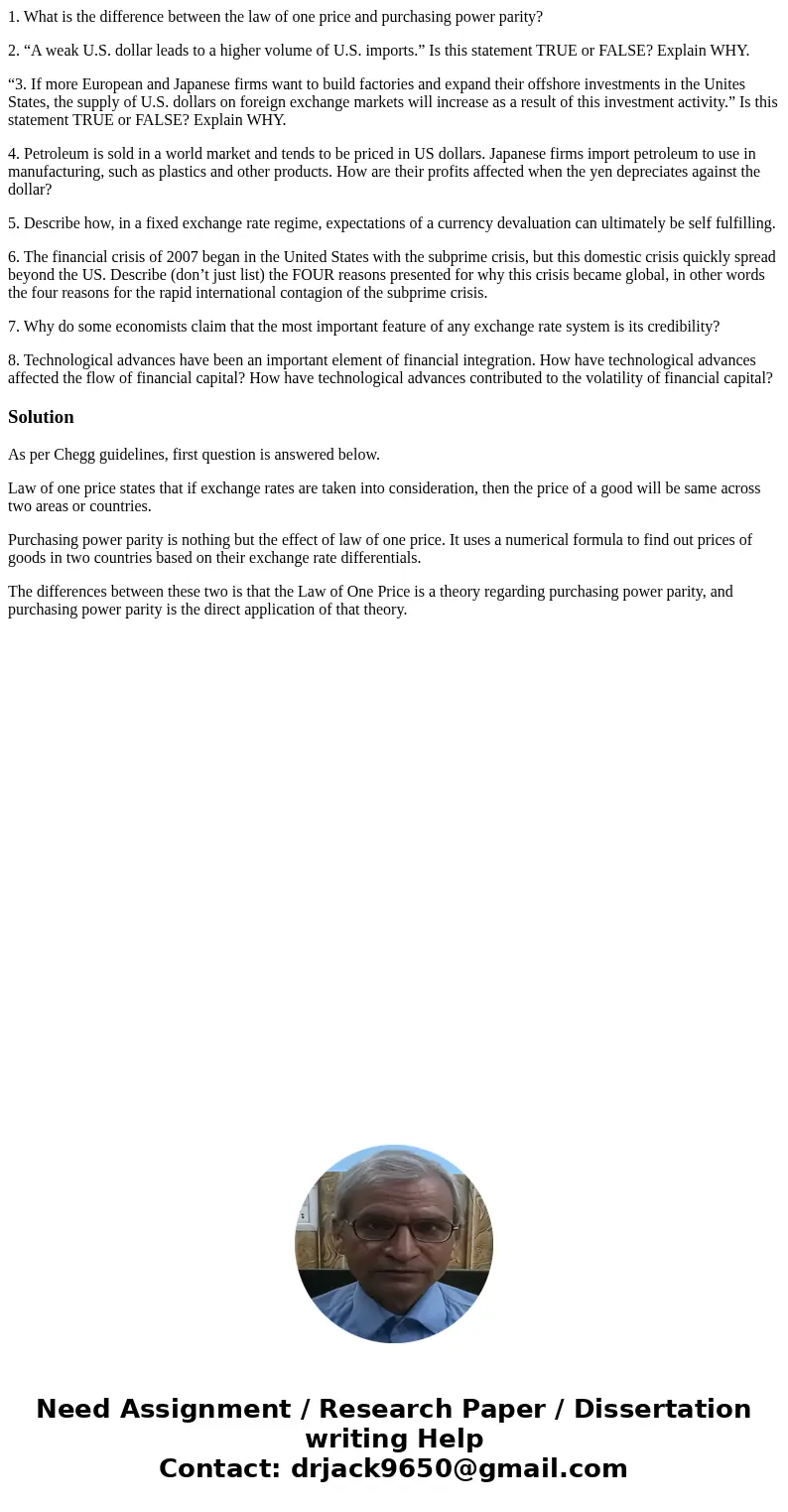1 What is the difference between the law of one price and pu
1. What is the difference between the law of one price and purchasing power parity?
2. “A weak U.S. dollar leads to a higher volume of U.S. imports.” Is this statement TRUE or FALSE? Explain WHY.
“3. If more European and Japanese firms want to build factories and expand their offshore investments in the Unites States, the supply of U.S. dollars on foreign exchange markets will increase as a result of this investment activity.” Is this statement TRUE or FALSE? Explain WHY.
4. Petroleum is sold in a world market and tends to be priced in US dollars. Japanese firms import petroleum to use in manufacturing, such as plastics and other products. How are their profits affected when the yen depreciates against the dollar?
5. Describe how, in a fixed exchange rate regime, expectations of a currency devaluation can ultimately be self fulfilling.
6. The financial crisis of 2007 began in the United States with the subprime crisis, but this domestic crisis quickly spread beyond the US. Describe (don’t just list) the FOUR reasons presented for why this crisis became global, in other words the four reasons for the rapid international contagion of the subprime crisis.
7. Why do some economists claim that the most important feature of any exchange rate system is its credibility?
8. Technological advances have been an important element of financial integration. How have technological advances affected the flow of financial capital? How have technological advances contributed to the volatility of financial capital?
Solution
As per Chegg guidelines, first question is answered below.
Law of one price states that if exchange rates are taken into consideration, then the price of a good will be same across two areas or countries.
Purchasing power parity is nothing but the effect of law of one price. It uses a numerical formula to find out prices of goods in two countries based on their exchange rate differentials.
The differences between these two is that the Law of One Price is a theory regarding purchasing power parity, and purchasing power parity is the direct application of that theory.

 Homework Sourse
Homework Sourse